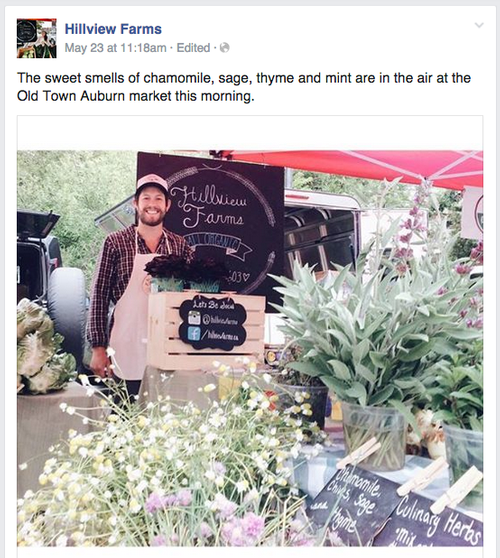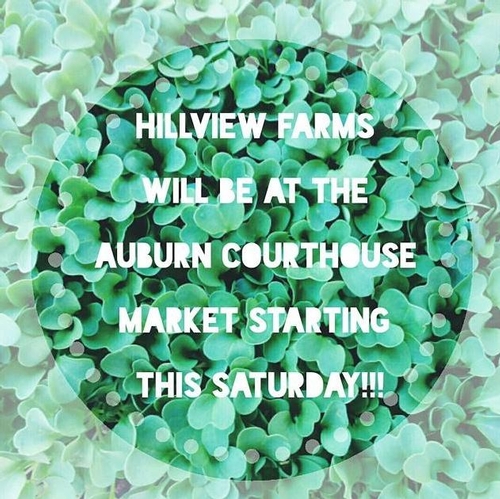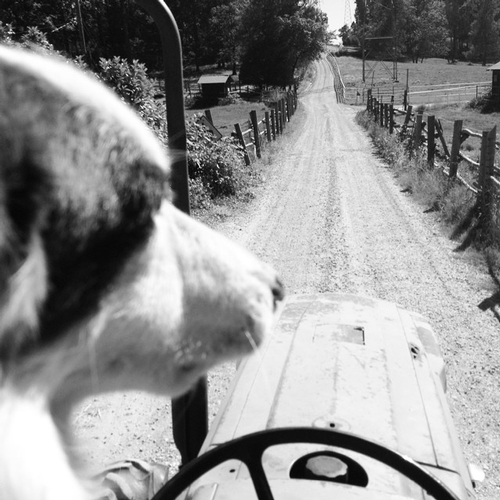Posts Tagged: marketing
Building a Web Presence for Your Farm Business: Part 3 — Let’s Get Social!
In Part 1 of this series of posts, we talked about the differences between personal websites and social media, and the importance of using both for your farm business. In Part 2, we looked at the essential elements for building a compelling website. In this week's post, we'll tackle that love-it-or-hate-it subject…social media!
There are a lot of social media platforms out there — Facebook, Twitter, Instagram, Pinterest, the list goes on… but don't worry, you don't have to use all of them! Facebook is the most popular of the bunch, so it's a good starting place — most of your customers are likely to be there. Twitter can be useful for real-time and location-based information (for example, that truckload of kale you'll be bringing to today's farmer's market), but its user base is far smaller. Instagram is a fun and easy way to share photos (and is ad-free, so far). Don't forget to add links to your social media sites on your main website, and vice versa!
The same guidelines apply for social media as for websites: choose your best photos, include a bit of background on you and your farm as well as the essential contact information, and include your logo if you have one. Keep in mind that social sites tend to be a bit more “condensed” as far as space for content, and people often view them on mobile devices (that is, tiny screens). It's especially important here to keep your text concise, and choose images that are visually striking, especially at small sizes. Check your social pages and website on as many different devices as you can — computer, laptop, tablet, smartphone — to see how they display on each.
The range of social media platforms available can seem overwhelming, especially if you try to tackle too many of them at once… but you probably only need one or two to make an impact. Talk to your customers, find out what social networks they use, and start small — you can always add to your social-media presence as you determine how much time and energy you want to spend. And think about dividing up the work: if someone in your “farm family” really loves being on Facebook, give him or her that job! Enthusiasm really is visible in social media; your followers can tell if you're having fun, or if you're just posting for the sake of advertising.
Managing a Web and social media presence can feel like a full-time job in itself, but it really is easy — and even fun — if you tackle the project as a series of bite-size steps. Start with the basics of a simple website and Facebook page, and then you can continue to develop your Web presence as time and resources allow. The key is to get started!
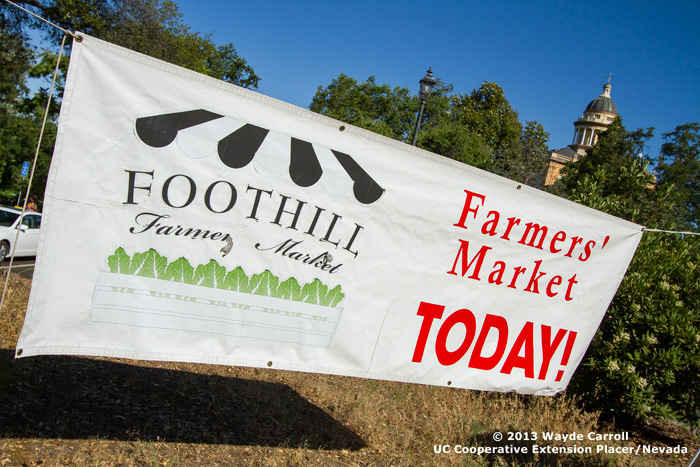
A few final thoughts and tips:
• Remember, you don't have to do everything! Begin with basics. Delegate. Grow.
• Don't just promote... talk about what really interests you. Tell your story. That enthusiasm and interest comes across in your writing and posting, and helps build the all-important connection to you and your farm.
• Think about your audience and customers, their interests, how they use Web and social media. Who are you trying to reach? What are they looking for? Why do they choose to buy from you?
• We don't farm just to produce a product. Why do you farm? Share that.
Further resources:
Tips for photographing your farm, from A Greener World (PDF)
A good overview of personal websites vs Facebook pages, from Inkling Media
Wordpress.org — free, open-source website building platform. (Note: wordpress.org is the self-hosted version, ideal for building your own website. Wordpress.com, while running the same software, is more geared toward bloggers, limits flexibility, and includes ads.)
Google Webmasters — tips and tools for building accessible, search-friendly websites
A handy introduction to using hashtags on Instagram, from Jenn's Trends in Social Media
List your business on farm directory sites like PlacerGrown, Nevada County Grown, and LocalHarvest
Some websites from local farms to get your creative wheels turning:
Hillview Farms: www.hillviewfarmsauburn.com
The Natural Trading Company: naturaltradingco.com
Dinner Bell Farm: www.dinnerbellfarm.com
Jim's Produce: jimsproduce.net
Previous posts in this series:
Building a Web Presence for Your Farm Business: Part 1 — Websites versus Social Media
Building a Web Presence for Your Farm Business: Part 2 — Telling Your Story
Building a Web Presence for Your Farm Business: Part 2 — Telling Your Story
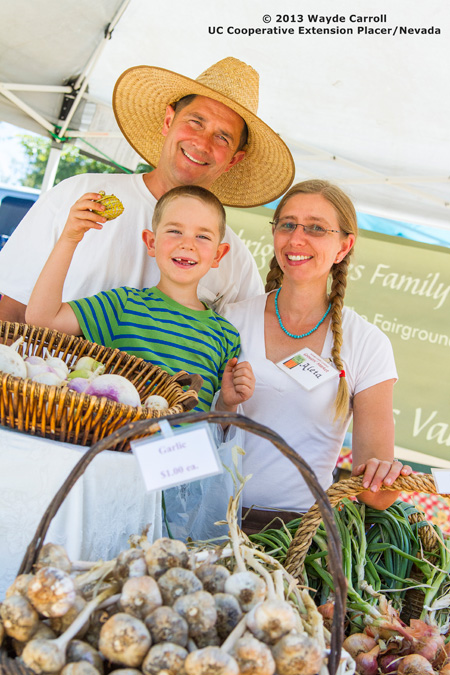
Last week, we talked about the differences between personal business websites and social media, and the importance of using both to build your web presence.
So — you've set up your Facebook account and bought your website domain name. Now, where to begin?
It can be a bit overwhelming designing a website from scratch, and you may find it easier to hire a professional or find a tech-savvy friend to help with the process. Or you can use free, open-source tools like Wordpress to set up a basic site, no programming knowledge required. But whichever way you decide to go, you'll still need to include the same key elements.
Content
This is your chance to share what you do with the world! Keep in mind that some people will go to your website looking for only the most basic information, while others will want to know all about your farm. Keep the key info front and center, but do consider including more of your story for those who are interested. A few questions to start the brainstorming process:
• Who are you, the farmer?
• What do you grow or produce? What is special about your crop(s) and your farm?
• How do you grow it? Do you use organic or sustainable practices?
• Why do you do what you do?
All this can be as brief or in-depth as you like, but it all helps to build that sense of connection between you and your customers. Include a bit about the history of your farm, your farming practices, your philosophy. And don't forget basic contact information, too — it's surprising how often people neglect to include their own names on their websites! Be sure that visitors can easily find your preferred contact info, as well as where your farm is located and where to find your products.
Once you have your content, it's time to make it look beautiful! Great photos are key to a good farm website. You might want to find a photographer friend, or consider hiring someone. (Getting quality images — especially photos of yourself that you actually like — can be easier with someone else behind the lens.) At the very least, use a good camera; cell phone snapshots just don't quite cut it! Include pictures of the farmers, the landscape, and some beautiful close-ups of your products.
When choosing photos, take a moment to put on your "consumer glasses" and try to look at them as a non-farmer. Does everything look clean, fresh, inviting? (We tend not to notice the junk piles and manure heaps, but your customers will!) Photos are a great way to give consumers a sense of connection to you and your farm, and to build your "farm story," so take the time to choose them carefully and make sure they reflect the bounty and beauty your farm has to offer.
Do you have a logo? If not, consider designing one, or choose a font or graphic to identify your “brand.” You can use this same branding across your website, social media, printed materials, packaging, even your farmer's market stand — it helps make your products visibly yours, simplifies the process of designing new elements (such as packaging or your website), and gives everything you do a coherent look and feel.
Do you like to write or photograph? If so, consider adding a blog to your site (and updating it regularly!) This is a great way to share what's happening on your farm – and an easy way to add new, current content regularly to your website. Keep it interesting, beautiful, engaging... it's not all just about promotion. Tell your story.
One more important detail: many users will be viewing your page on smartphones and other mobile devices, so be sure that your site is mobile-friendly. This ensures that your text will be readable, images viewable, and site navigable on a mobile phone or tablet. Most Web design platforms, such as Wordpress, have mobile device compatibility built in; if you work with a Web designer, check that he or she will be building a mobile-friendly site. You can use Google's Mobile-Friendly Test tool to check a site for compatibility.
In Part 3, we'll take a look at adding social media to further build connection with your customers, as well as some further resources and great local farm websites for inspiration!
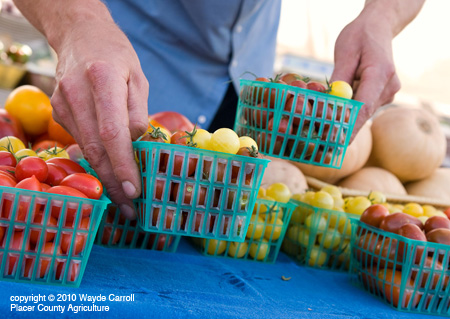
Previous posts in this series:
Building a Web Presence for Your Farm Business: Part 1 — Websites versus Social Media
Building a Web Presence for Your Farm Business: Part 3 — Let's Get Social!
Building a Web Presence for Your Farm Business: Part 1 — Websites versus Social Media
Most of us don't choose a life in farming because we love sitting at a desk in front of a computer, or because we'd rather be indoors checking email or analyzing Web traffic statistics. But it's a fact of 21st century (business) life: sooner or later, you'll have to get online! Good marketing is key to a successful farm business, and it's now easier than ever to connect with consumers via the Web and social media.
“But my customers already know me”, you say! “My farmer's market stand is head turningly gorgeous, and I'm on first-name basis with the people who buy what I produce. Why do I need a Web presence?”
The short answer: it's your business card, and it's your story. A website gives you credibility, visibility, a way for people to find you — and a way for you to share who you are and what you do with your customers, and with the world.
First of all: what is a “Web presence,” anyway?
It can (and should) include both a website and social media (Facebook, Twitter, etc.). Your website gives you credibility, visibility, and search engine rankings — think of it as your storefront. Social media adds interaction, personality, and fun.
Wait, I have a Facebook page — isn't that enough?
Facebook is great for connecting with your customers, but it isn't a replacement for a website! It may be tempting to use “free,” quick-and-easy social media sites instead of investing time (and possibly money) in building a custom website, but as we all know, you do get what you pay for. Social sites are generally template-based, generic, and limited in flexibility; they give users very little control or ownership of their content. And — though it may be hard to believe — not everyone is on Facebook! Limiting your Web presence to social-media sources can actually limit your reach to potential customers.
However, social media does have its advantages. Customers have to make the effort to go find and visit your website, whereas Facebook, Twitter, and the like are more integrated into the daily “stream of consciousness” — your followers will see your updates without actually having to go out of their way to look, and in “real time,” as you post them. This is especially great for announcing market days, specials, and things happening right now. Just picked the first peaches of the season? Make sure your customers are the first to know, and include your favorite peach ice cream recipe! Got a truckload of kale you've just harvested? Post a photo announcing your two-for-one deal at the farmer's market today!
By contrast, a personal website gives you a “permanent” home on the Web. You own it, it will act as a hub for all the aspects of your Web presence (blog, social sites, etc.), and you have full control over the content and design. Next week, we'll talk about how to tell your story with great content, beautiful photos, and engaging social media. Stay tuned!
Continue reading:
Increase Sales by Posting to Social Media
Social media platforms such as Facebook, Twitter, and Instagram are great places to tell the story of your farm. In a recent survey conducted by Eat Local Placer and Nevada, 60% of participants chose “supporting local farmers” as the primary reason for purchasing locally grown fruits and vegetables. Our community and your customers care about you and your farm business! By sharing photos, thoughts, recipes, the good times, and the bad times you are creating a way for local consumers to feel connected to your farm.
If you are already sharing your farm business on social media, it's a great idea to begin thinking strategically about how you post, when you post, and what you share. Everything that you share on the internet (including what you share on your personal profiles) affects your brand. And only sharing what you have for sale and when it is for sale is no fun for anyone- these posts will be regarded as SPAM and your social media profiles will lose attention. The better choice is to think about a larger strategy for sharing the activity of your farm, engaging your community by providing useful and interesting information, and also providing opportunities for people to purchase your products when available.
I like to think of posting to social media as story-telling. Many of you chose to be farmers because of the lifestyle it affords. That lifestyle, or at least a romanticized version of the farming lifestyle, is very popular right now. Share your life as a real farmer. Post a photo of your field when you first walk out in the morning. Post of photo of your farm-fresh lunch and include a recipe. Share your thoughts on the drought and its impact on local agriculture. You will gain followers (who are also potential customers) by providing information that is engaging and images that are striking.
I challenge you to not paint too rosy of a picture of your farm. Be honest with who you are and what life is like on your farm. Sharing the bad times may engage your community in a “call to action.” Check out the response our farm received when we broke the news about our high-tunnel blowing over in a windstorm. There may be some catharsis in sharing the hard times; so often we farm alone and can feel isolated and unappreciated in hard times when, in reality, we are a part of a community that is deeply invested in our well-being.
To craft a social media strategy that will help increase sales, follow these simple rules:
- Post useful and interesting information. Remember- you must be actively farming for your story to have value.
- Follow the 80/20 rule. 80% of your posts should be interesting and useful, 20% of your posts should encourage sales of farm products.
- Post regularly. Avoid posting erratically. Try to share a couple of times a day.
- Post at the right time. Posts between 1:00 p.m. and 4:00 p.m. tend to be viewed by the most people.
- Share your personal life with intention. Everything you put on the internet affects your business reputation. Think wisely about the parts of your life you may want to keep out of the public domain.
- Have a strategy. Simply using a social media platform is not a marketing strategy. What, how and when you post is the strategy. Set a goal, like increasing sales of a new crop at the farmers' market, and then craft your posts with this goal in mind.
- Make your social media presence known. Follow and share other peoples' posts to increase your own visibility. Ask your friends to “Like” you on Facebook. Be sure to put up a sign at the farmers' market letting your customers know how to find you on the internet.
- Don't become addicted! There is so much information on the internet. Don't get bogged down by social media posting and don't spend too much time doing it. Set limits for yourself if you feel like you are spending too much time online. Those carrots won't plant themselves!
The Social Farmer
Many of you have experienced the long, isolated days of the farm. The work that we do as small, family farmers is often the work of one. And while we'd love for it to be the work of many (many hands = light work + more fun) the financial realities of our businesses do not always allow for work parties. Here's a thought: share the experiences of your farm day with your community through Social Media. Sharing a quick photo of the broken belt of your flail mower or writing a short note about the heat of summer is not the same as real-time human contact. It is, however, another avenue of social encouragement from colleagues, friends, and oddly enough, strangers. You deserve to feel a connection to the broader community that supports the work you do.
The benefits of social media are numerous. On a personal level, sharing through social media adds a creative element into your day and an opportunity for you to let others know about the life you lead as a farmer. Social media can help you to connect with the community of eaters that support your farm, many of whom are often eager for a deeper connection to the food they eat and the farms that produce it. Social media is a great way to connect with other farmers as well, both here in your own backyard, around the country and even internationally. Share the technical aspect of your work. Other farmers DO want to see a picture of that new irrigation header you just built or the insulation in your walk-in cooler.
Another very useful benefit of social media is the automatic record keeping that occurs alongside your social media posts. Just planted your next radish succession? Take a picture, post it, hashtag it so you can find it later, and voila- you've just make a very accurate record of a farm event. Just made a beautiful bouquet of today's best blooms? Take a picture, post it, hashtag it and you've just made a record of flower availability for years to come. These farm records are not a pile of partially filled out charts crowding your inbox; they are a beautiful, chronological display of your farming activities, easy to access, and stored on the internet for all, foreseeable time.
A note of caution: be mindful of what you make public on the internet. Try not to over share your life. Choose posts and photos that are both useful to your farm as well as interesting to the people that follow you on social media. Remember that people you don't know and may never meet will see your posts.
There are many platforms to choose from and the majority of them are easy to use from your smartphone. Twitter and Instagram are applications that were designed specifically for hand-held devices which means they are very appropriate for farmers to use in the field. A great thing about many of these social media sites (Instagram and Twitter in particular) is that they are fast and dirty (kind of like farming, except for the fast part) and won't take much time out of your busy day. A blog is a great way to tell your farm story, but it is also a considerable time commitment. It will take a few minutes to snap a photo and post it to the internet.
Whether it is through photos or words, tell us the story of your farm. We should all pause more often to appreciate the wonder, beauty, intensity, hilarity, pain and grit of our daily work.
Check out what some of our Placer and Nevada county farmers are doing on the World Wide Web:
https://www.facebook.com/pages/South-Fork-Farm/446566642072107
https://twitter.com/flyingmulefarm
http://instagram.com/localyolk?modal=true
https://www.facebook.com/FoothillRootsFarm
http://instagram.com/dinnerbellpaul
http://www.pinterest.com/littleboyflower/
https://twitter.com/DinnerBellFarm
https://www.facebook.com/HillviewFarms.ca



